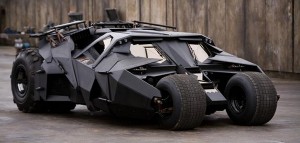Court Rules that Batmobile is DC Comics’ Copyrighted Character
The 9th Circuit has ruled that the Batmobile is entitled to copyright protection.
The defendant in the case, Mark Towle, produced replicas of the Batmobile through his business, Gotham Garage. Mr. Towle advertised these replicas on the internet, on a website called batmobilereplicas.com. Mr. Towle never disputed that he intended to copy the Batmobile, but claimed that he was unaware that copying the various versions of the car was copyright infringement. DC Comics, published the original Batman comic book series, and still owns the exclusive rights to the Batman comic book series. 
Let’s explore some of the issues involved in this case. Quoting the decision, “to the Batmobile…”
What is (and isn’t) Copyrightable?
Copyrights can apply to written works, music, plays, movies, and many other materials. However, even when a publisher clearly owns the copyright to their work, questions may remain about what exactly is covered by the copyright. As the decision states, ‘courts have recognized that copyright protection extends not only to an original work as a whole, but also to “sufficiently distinctive” elements, like comic book characters, contained in their work.’ In other words, there may be elements of a work that are not protected by copyright; these tend to be ones that are not so unique to that particular work.
When is a Character Distinctive Enough to be Copyrightable?
A character in a comic book, television show, or movie must be distinctive to be protected under a copyright. The decision in this case states three criteria to help figure out whether a character is truly distinctive enough to be copyrightable:
- The character must generally have physical and conceptual qualities.
This means that the character has to be more than just a drawing, and more than just an idea. For example, many characters in written books are not considered protected by copyright.
- The character must be sufficiently delineated to be recognizable as the same character whenever it appears.
In other words, the character must be identifiable even if its look changes somewhat over time as it appears in comic books, movies, or on TV. The character has to have some consistent traits or attributes that let everyone know who (or what) it is.
- Finally, the character must be “especially distinctive” and contain “some unique elements of expression.”
This means that some common or classic characters (like a basic princess, wizard, or knight) may not meet the criteria, especially if they have a limited role in the work. Characters that are really part of a unique story may qualify, on the other hand, even if they do not really speak (R2-D2) or if they are not sentient (like a car!).
So, is the Batmobile a Character?
According to this decision, the Batmobile is a character. It meets the three criteria above:
It has both physical and conceptual attributes- it has been drawn by comic book artists and made into a 3-D version for TV and movies.
It is recognizable- It has been around in one form or another since 1941. As the case notes, “it is almost always bat-like in appearance, with a bat-themed front end, bat wings extending from the top or back of the car, exaggerated fenders, a curved windshield, and bat emblems on the vehicle.” It also has consistent “crime fighting attributes,” with the most “up-to-date weaponry and technology.”
It is especially distinctive – It is one of Batman’s trusty sidekicks, and has a “unique and highly recognizable name.”
What Does This Decision Mean for DC Comics?
When a publishing company owns a copyright to an element of a work, like a character, it means that no one can make a derivative character (i.e. an adaptation of the original) without the consent of the owner.
What Does This Decision Mean for the Future of Copyright Law?
This decision helps to clarify the law. It defines what types of characters can be copyrighted, and included objects in that definition. This puts potential copyright violators on notice that they can’t make and sell derivative copies of some objects we’ve seen in movies, on TV, or in comic books. We will probably get to see how far this logic goes in future cases, as more publishers, and authors try to stop their characters from being copied.


Comments